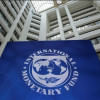GDP growth overstated since 1995

Bangladesh's economic growth has been overstated since 1995 and the practice of making inflated estimates rose after the fiscal year 2012-13, according to the findings of the white paper panel.
It said Bangladesh was seen as one of the fastest-growing economies but its growth became a "paradox" to many during the tenure of the previous government. But the development narrative was underwritten by "cooked-up" gross domestic product (GDP) growth figures.
"Even this invented hyped-up development story could not hide the stagnating tax-GDP and private investment-GDP ratios and resource paucity for human development sectors, including social protection," the panel said.
"The record of poverty alleviation turned out to be a vain glory. Indeed, as our analysis shows, the data ecosystem of the country became essentially political preference driven," the team wrote in the "White Paper on State of the Bangladesh Economy", submitted to the Chief Adviser today.
The interim government, which took over in early August following the ouster of the Awami League government, formed the white paper panel at the end of the same month.
The panel, based on consultations with various stakeholders, said there is strong evidence that GDP growth was overstated irrespective of political regimes. But the overstatement itself grew noticeably in the past decade.
The paper said it analysed Bangladesh's GDP growth estimates based on an international panel data set.
"It shows, with the exception of a couple of years in the mid-90s, the corrected growth is lower every year. The difference itself grew larger over time," the paper said, adding that the reported and corrected growth moved in the same direction until 2012-13.
"The divergence increased over the six years thereafter as measured growth increased while corrected growth raced down."
The team, led by Debapriya Bhattacharya, a distinguished fellow at the Centre for Policy Dialogue (CPD), said Bangladesh's average growth rose to 4.2 percent in the 1980s from 3.8 percent in the previous half decade in which growth was most volatile.
Average growth rose to 5.2 percent in the 1990s with lower volatility. Subsequently, growth travelled on a stable path until 2009.
A point of inflexion occurred around 2010, taking average growth to 6.7 percent from FY14 and further to 7.3 percent during FY19 with declining volatility.
Growth slowed since the pandemic, it said.
"The fastest growing refrain loses its clothes when the data is discounted for statistical aberration. The conclusion that growth was slowing four to five years before the pandemic is then inescapable."
Bangladesh's economic growth declined to below 5 percent from FY13, according to the paper.
"All the cheerleading was based on a disingenuous numbers game which switched growth to patches of two linear paths subsequent to 2010 until the pandemic in 2020."
The panel, comprising mostly of economists, said there was undoubtedly growth, certainly in excess of population growth.
"But official data on the quantity and recent direction of growth misses the economy's sleepwalk into a downward sloping growth path, not to speak of the quality problems associated with the quantity actually achieved."
The panel cited a study by The World Bank in 2022 on 149 countries ranging from 1970 to 2019 that ran a time series regression analysis incorporating nightlight intensity as an alternative measure of economic activity.
The study found that the period FY13-FY19 was an outlier.
"The deviation of officially reported from predicted growth was, on average, 3.5 percentage points higher than in previous periods."
The panel said the difference between predicted and actual values was one percentage point for agriculture and 1.7 percentage points for services.
Manufacturing stood out with a difference exceeding 7 percentage points out of the 10.6 percent average reported growth during the period of the seventh Five-Year Plan, it added.
The white paper team said the growth figures were not attributable only to just data or methods.
It cited discussions with officials of the National Accounts Wing of the Bangladesh Bureau of Statistics and added that fearing wrath from above, they chose to err consistently on the higher than the previous year's side.
"The checks and balances that the BBS had through technical committees completely broke down from 2015 onwards," it said.
"The linear rise was orchestrated by political bosses who had a strong incentive and a mindset to manipulate GDP growth estimates for domestic and external propaganda."

 For all latest news, follow The Daily Star's Google News channel.
For all latest news, follow The Daily Star's Google News channel. 










Comments